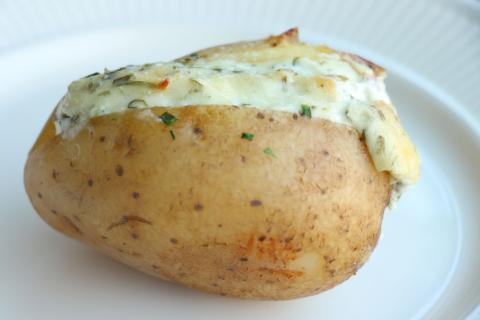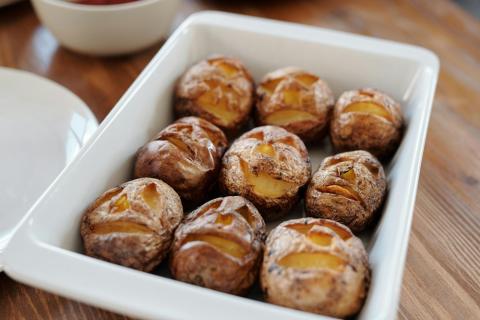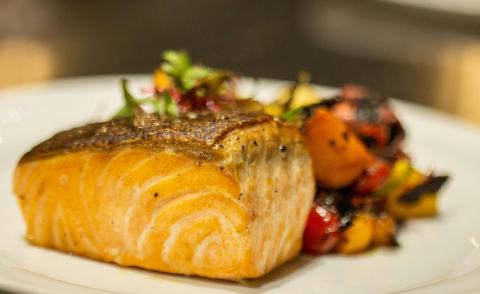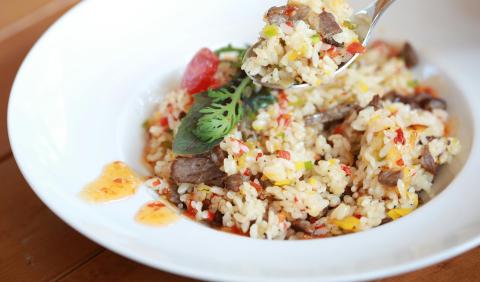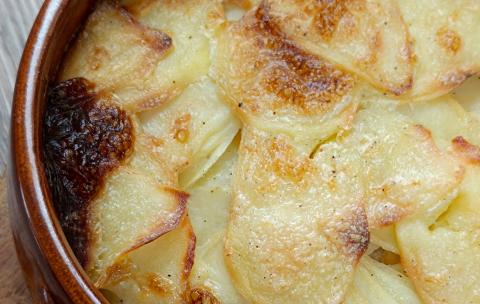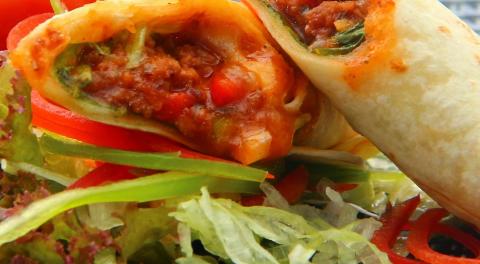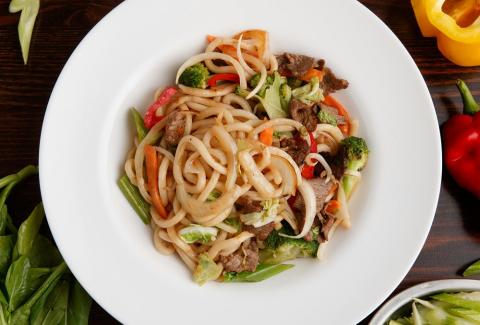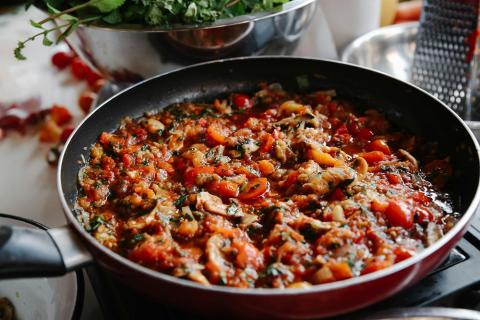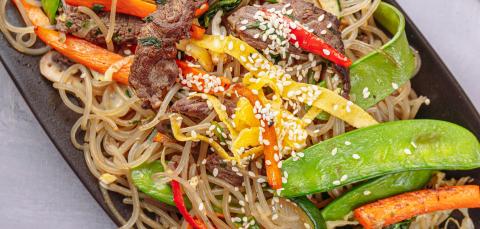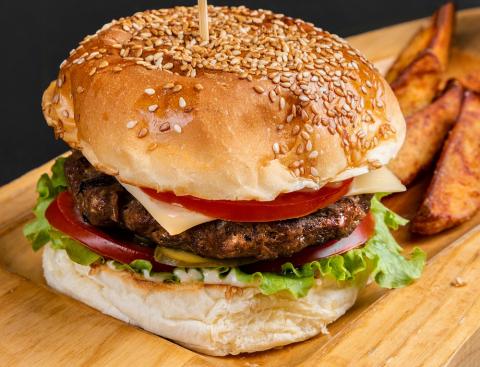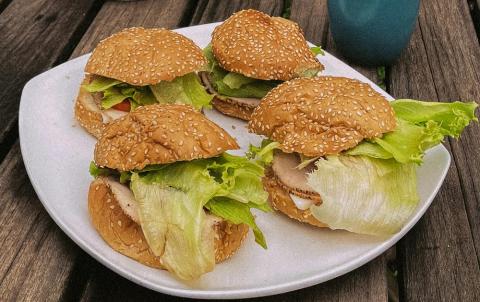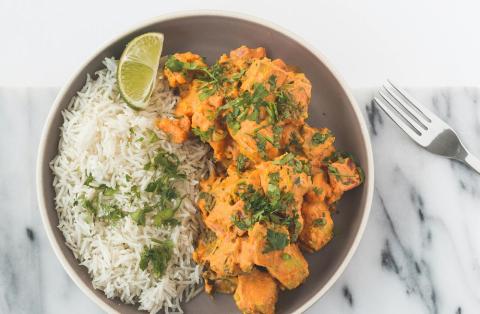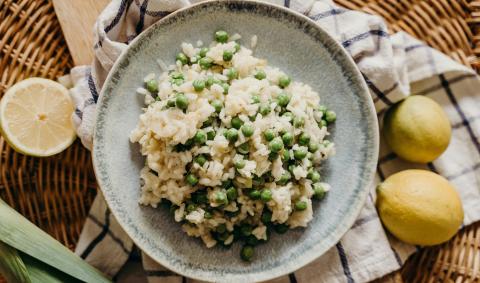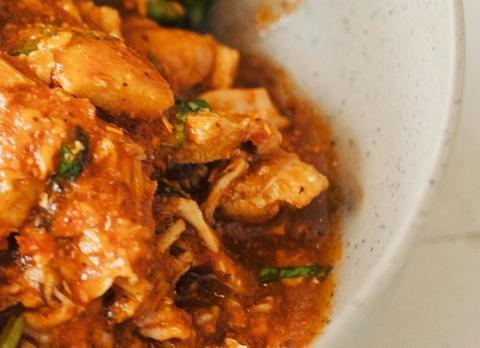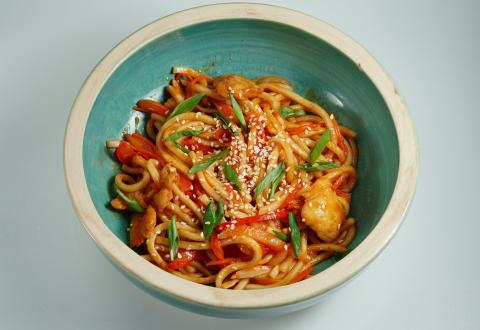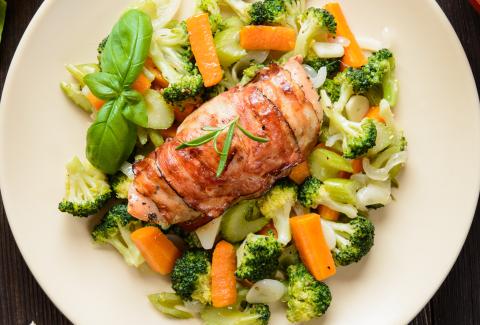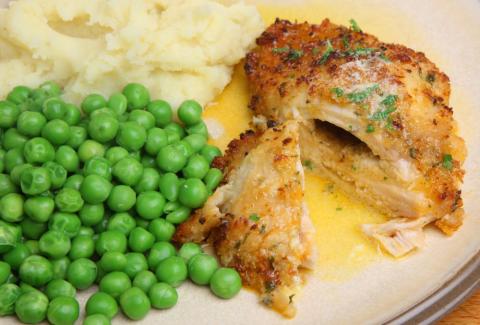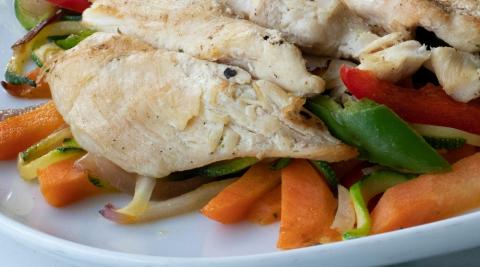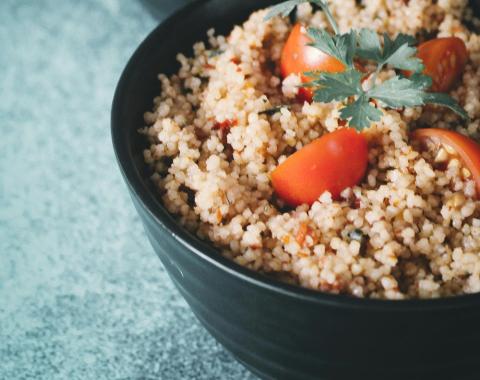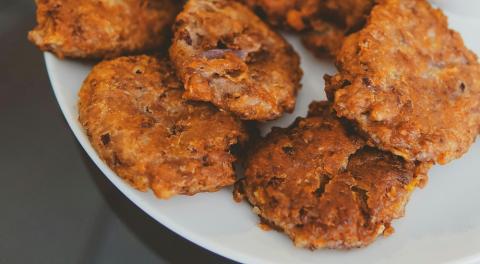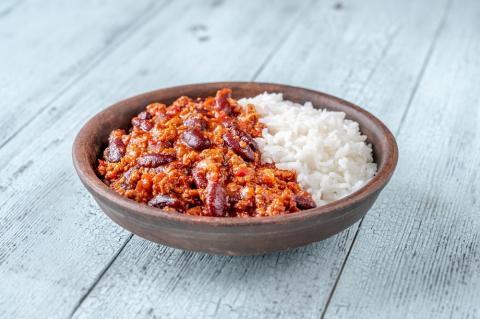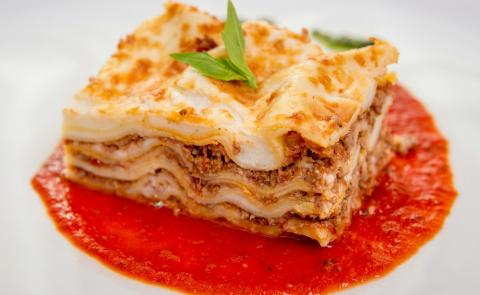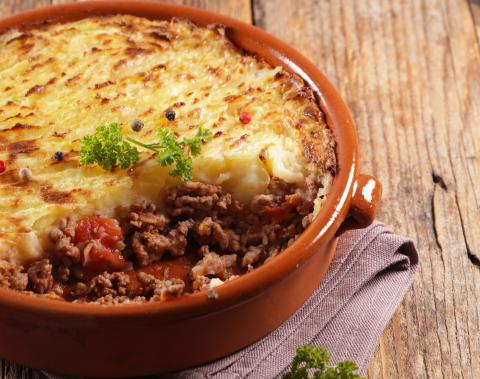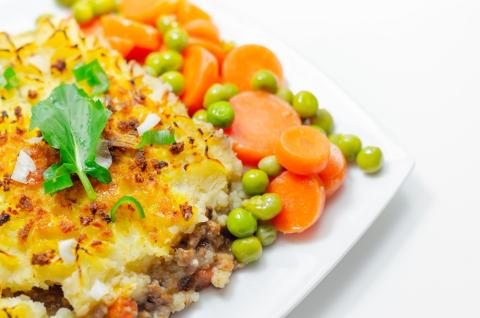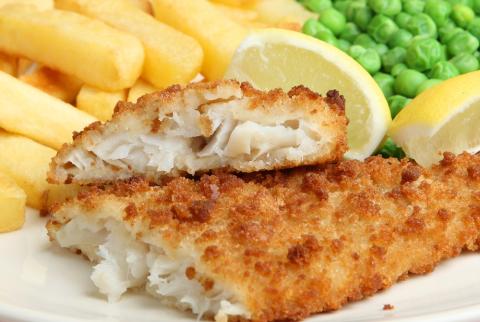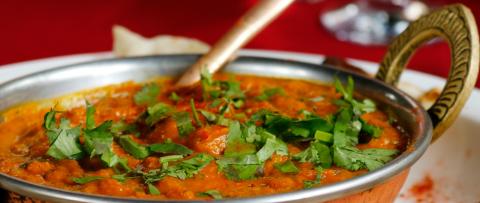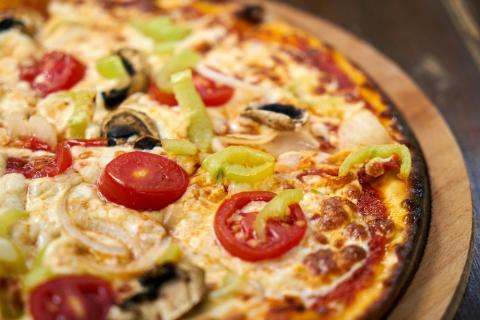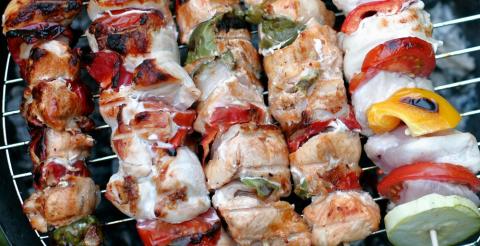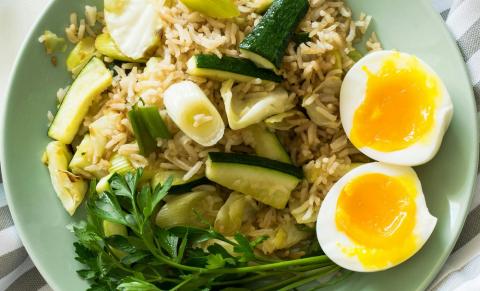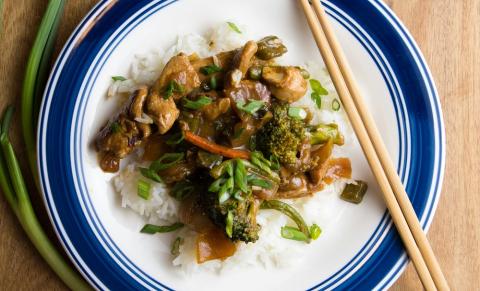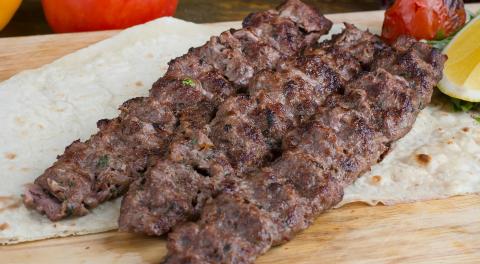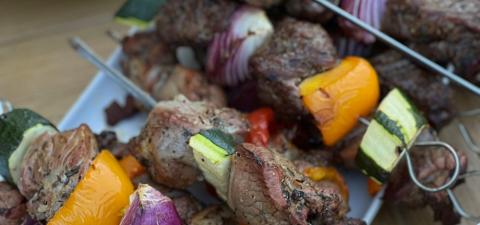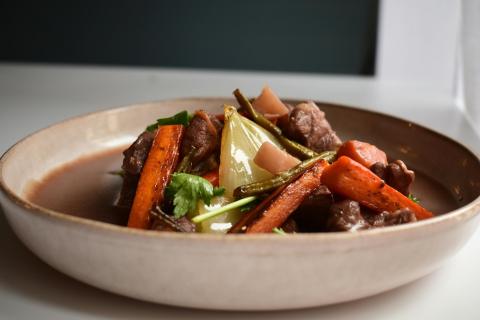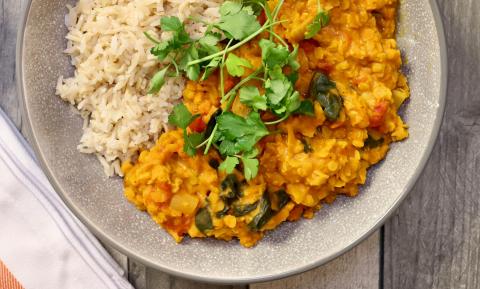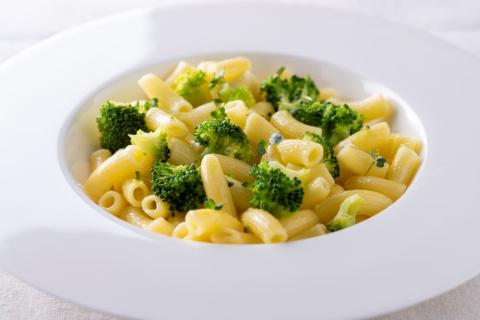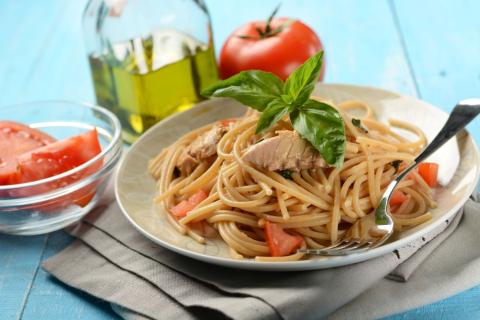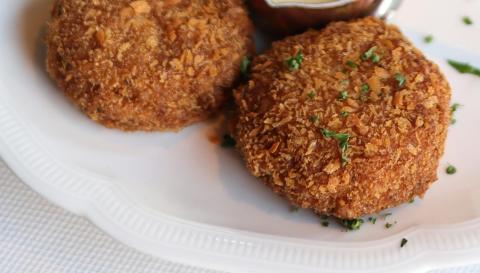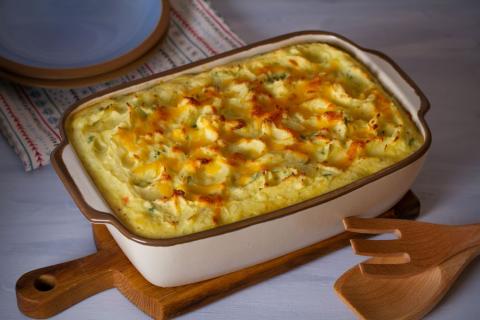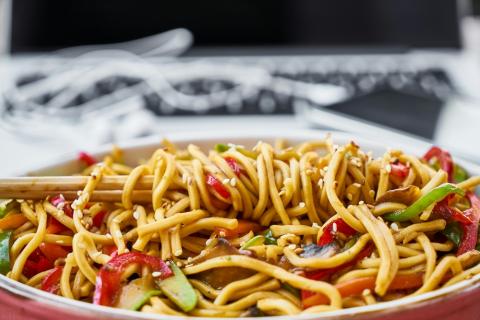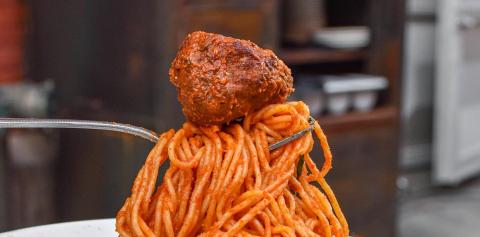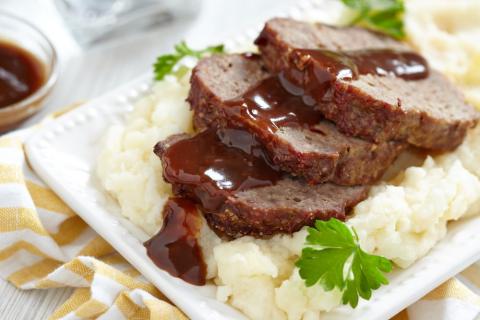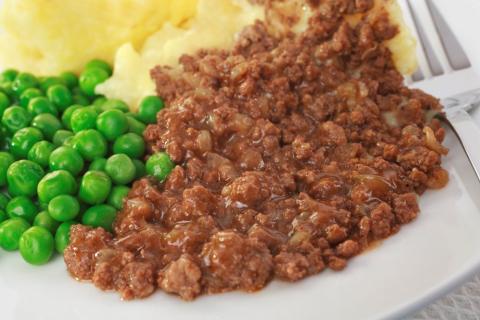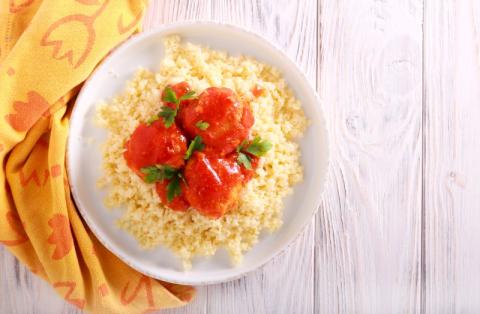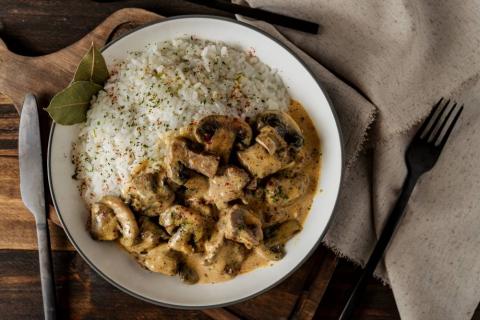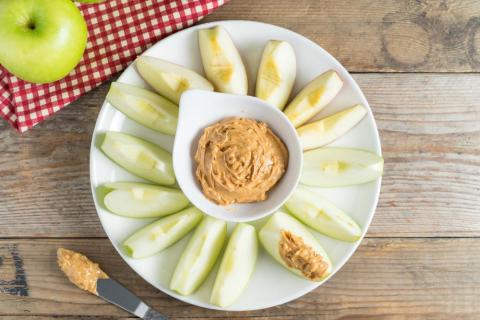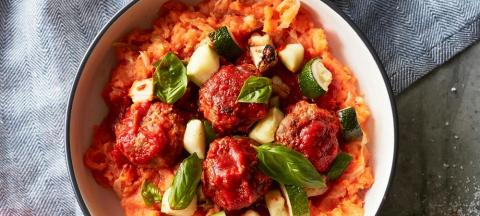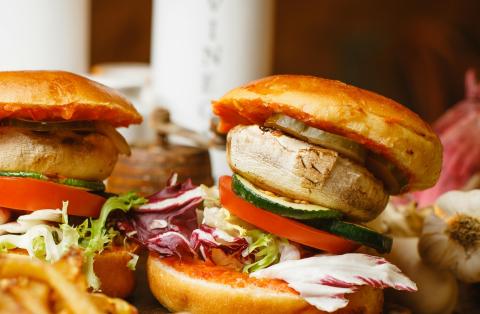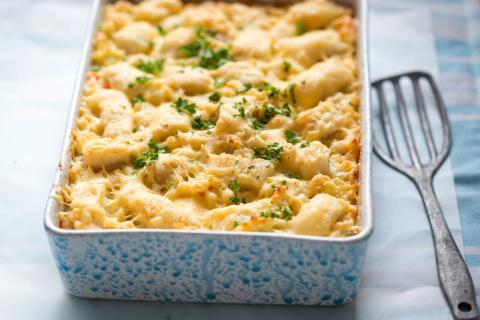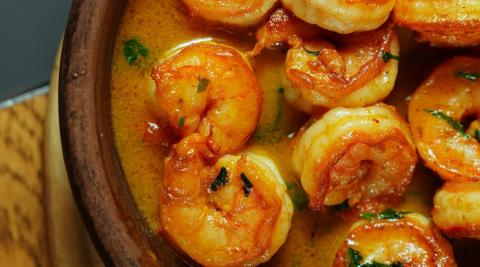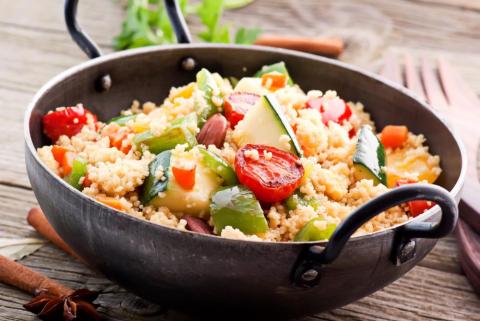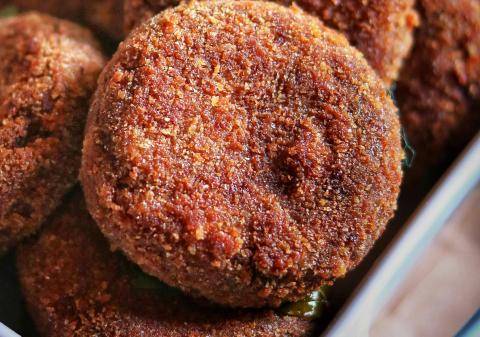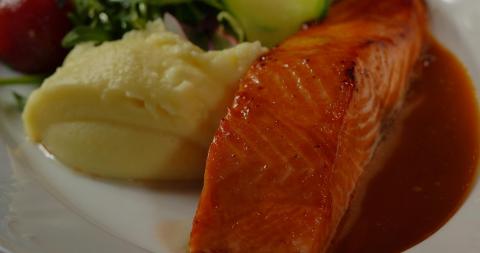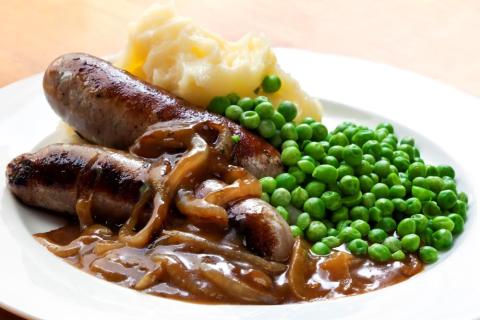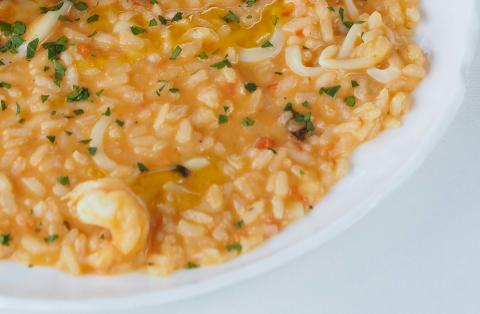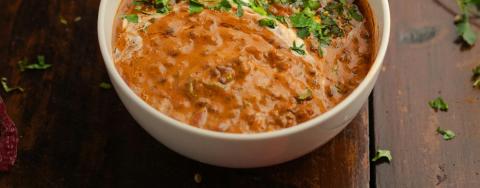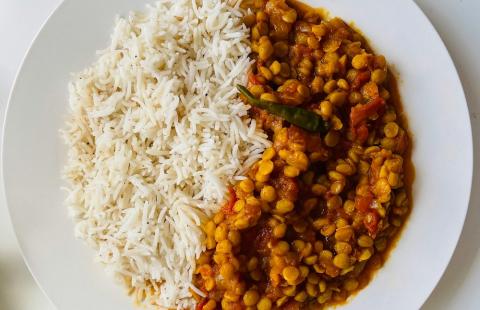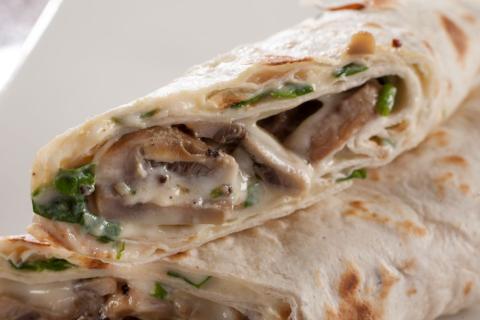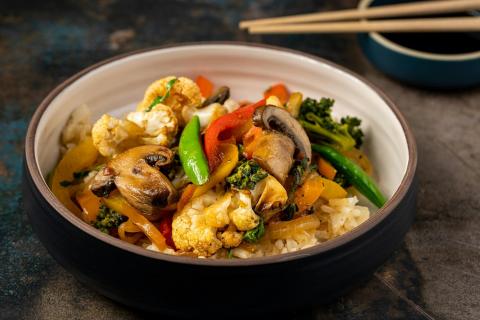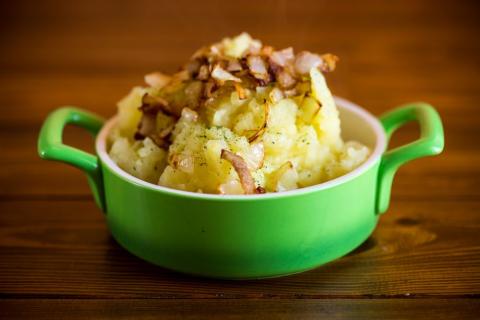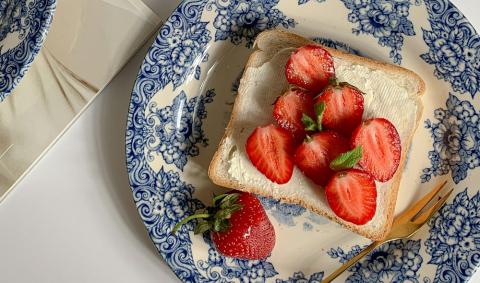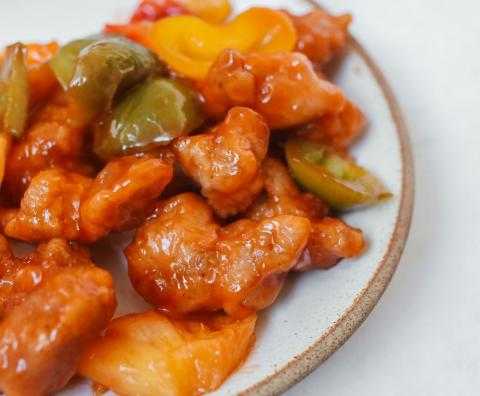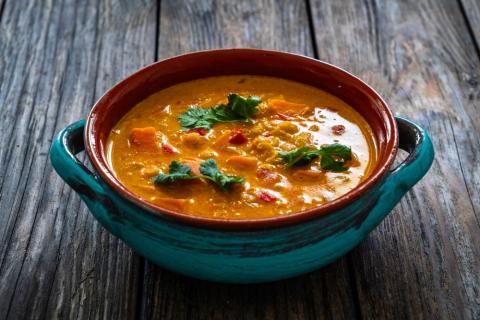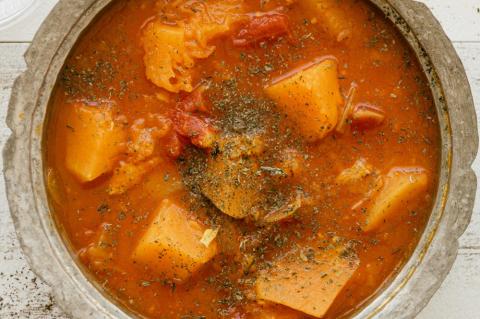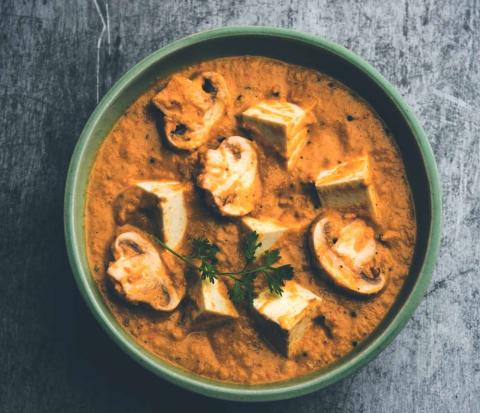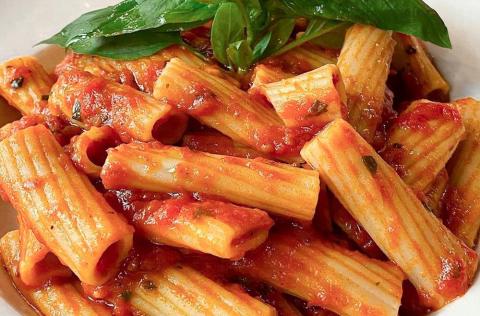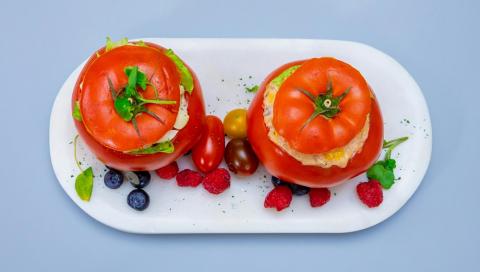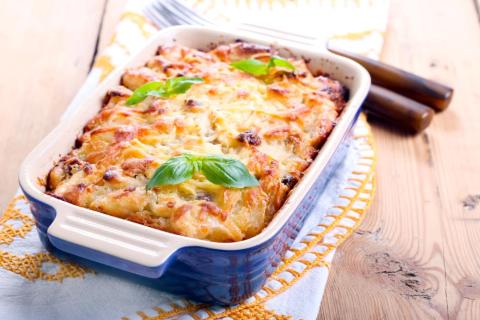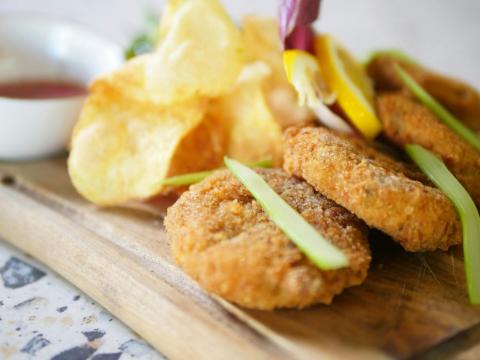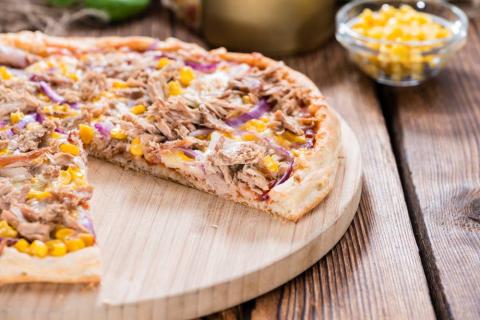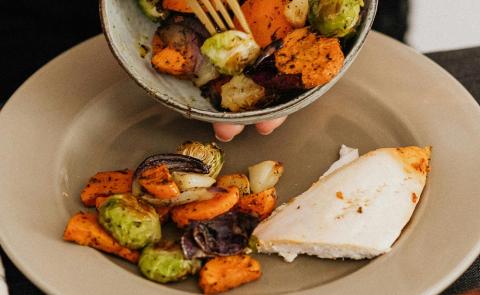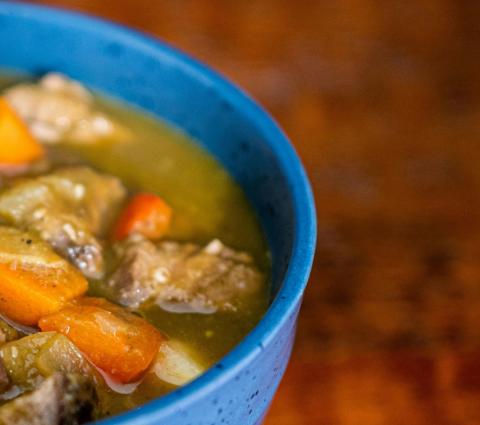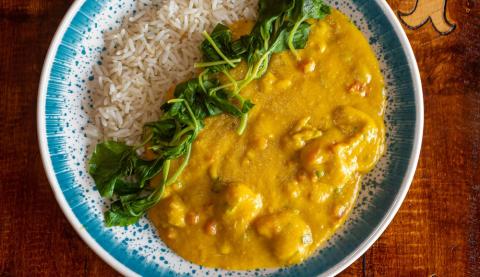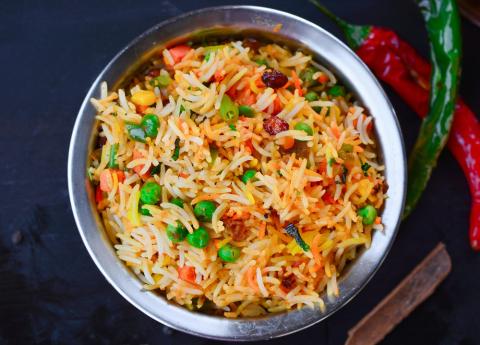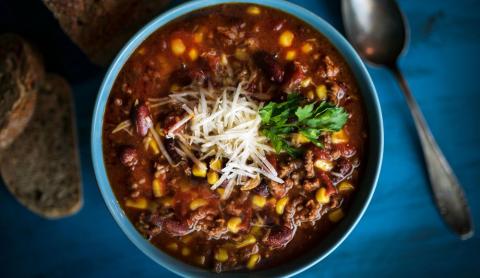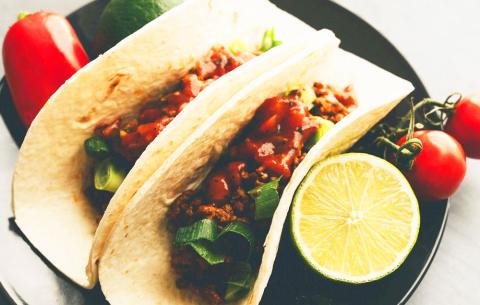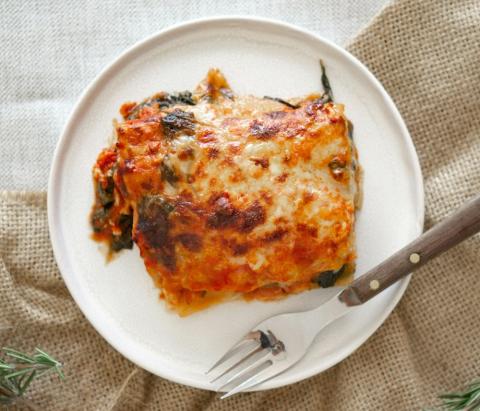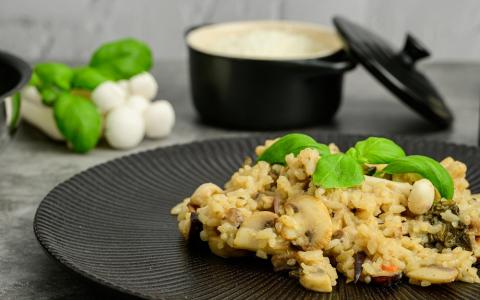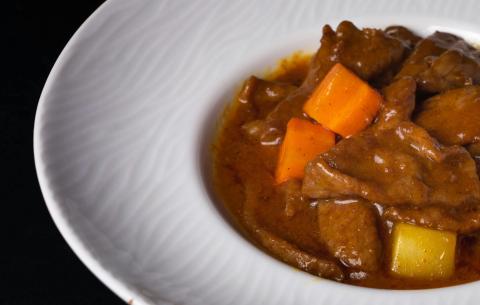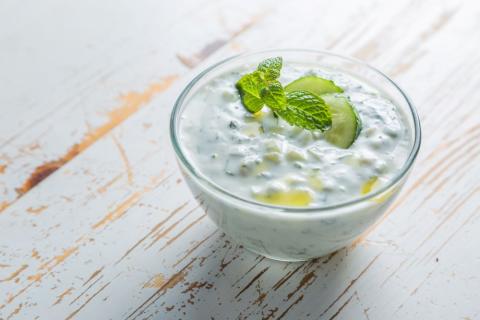- 1 (400g) Cauliflower
- 1 (150g) Onion
- 1 (140g) Carrot
- ½ (80g) Leek
- 1 Head (150g) Broccoli
- 1 (160g) Red Pepper
- 2 Cups (160g) Frozen Mixed Vegetables
- 2 (170g) Tomatoes
- ½ Pint (300ml) Semi-Skimmed Milk
- 1 Tablespoon (20g) Cornflour
- 12 Tablespoons (120g) Reduced Fat Cheddar Cheese
- 1 Teaspoon (8g) Wholegrain Mustard
- 1 to taste Pinch (1g) Ground Black Pepper
- 2 ½ Cups (150g) Breadcrumbs
- 20 (800g) New Potatoes
Ingredients
Allergy Disclaimer
Always check the label of each ingredient for allergy warnings.
Method
- Preheat the oven to 180°C / 160°C fan oven / 360°F / gas mark 4.
- Peel and chop onion and carrots, place in a large pan with a mug of cold water and bring to the boil then simmer gently.
- With hands break the cauliflower and broccoli into small florets. After 2 minutes of simmering add them to the pan with the onion and carrot.
- Cover the pan with a lid allowing the vegetables to steam gently. Add more water if the pan boils dry.
- Deseed the pepper and dice. Slice the leek and grate the cheese.
- Mix the cornflour in a teacup with a small amount of the milk to make a paste.
- Once the cauliflower is tender (test with a knife). Transfer the vegetables to a oven proof dish along with the pepper, leek and frozen vegetables, leave cooking water in the pan.
- Pour the cornflour paste into the pan used to cook the vegetables and return to heat. Gradually add the remaining milk, stirring all the time with a wooden spoon until the mixture boils and thickens.
- Remove the sauce from the heat and stir in half the grated cheese and the mustard. Add black pepper to taste. Pour sauce over the vegetables.
- Slice the tomatoes and place on top of the vegetables and sauce. Mix breadcrumbs and remaining cheese together and sprinkle over the tomatoes.
- Bake in the oven for approximately 30-35 minutes until bubbling and golden. While baking wash new potatoes and boil for approximately 10 minutes and serve with the bake.
Time Saver Tips
Can be made in advance and baked when required. Once cooled can be kept in the fridge for another day.
Cost Saver Tips
Can be frozen after cooling. Defrost throughly before reheating. Can be made with left over vegetables.
Tips for Kids
Use their favourite vegetables.
Nutritional Information
Based on a single serving of 632g (% of an adult's reference intake)
Energy
550 kcals ( 28 %)
2,309 kJ ( 28 %)
Fat
4.4 g ( 22 %)
Saturates
92.9 g ( %)
Sugar
19.5 g ( 22 %)
Salt
1.8 g ( 30 %)
Detailed nutritional information
| Per 100g | Per 632g serving | |
|---|---|---|
| Energy Kcals | 87 | 550 |
| Energy Kj | 365 | 2,309 |
| Protein | 4.5 g | 28.4 g |
| Total Fat | g | g |
| Saturated Fat | 0.7 g | 4.4 g |
| Carbohydrates | 14.7 g | 92.9 g |
| Total Sugars | 3.1 g | 19.5 g |
| NSP Fibre | 1.4 g | 8.8 g |
| Sodium | 115 mg | 727 mg |
| Salt | 0.3 g | 1.8 g |
Find out about nutritional labelling
Nutrition labels on the front of packaging
- Most of the big supermarkets and many food manufacturers display nutritional information on the front of pre-packed food.
- Front of pack nutrition labels provide information on the number of grams of fat, saturated fat, sugars and salt and the amount of energy (in kJ and kcal) in a serving or portion of a recipe.
- The labels also include information about reference intakes (expressed as a percentage) which are guidelines about the approximate amount of particular nutrients and energy required for a healthy diet.
- The colour coding tells you at a glance if the food has high (red), medium (amber) or low (green) amounts of fat, saturated fat, sugars and salt.
- The more greens on the label, the healthier the choice
- Amber means neither high nor low, so you can eat foods with all or mostly ambers on the label most of the time.
- Reds on the label means the food is high in that nutrient and these are the foods we should cut down on. Try to eat these foods less often and in small amounts.
Food shopping tips
If you’re trying to decide which product to choose, check to see if there's a nutrition label on the front of the pack. This will help you to quickly assess how your choices stack up. You will often find a mixture of red, amber and green colour coding for the nutrients. So when you're choosing between similar products, try to go for more greens and ambers and fewer reds if you want to make a healthier choice.
 Activities & Play
Activities & Play Behaviour
Behaviour Childcare
Childcare Development & Growing Up
Development & Growing Up Family, Friends & Relationships
Family, Friends & Relationships Feeding Your Baby
Feeding Your Baby Food & Eating
Food & Eating Health & Safety
Health & Safety Mental Health & Wellbeing
Mental Health & Wellbeing Money & Work
Money & Work Online Behaviour & Safety
Online Behaviour & Safety Pregnancy & First Days
Pregnancy & First Days School & Education
School & Education Sleep
Sleep


